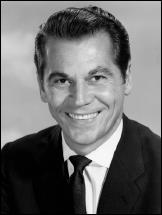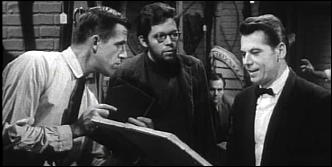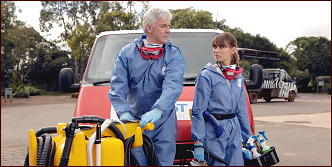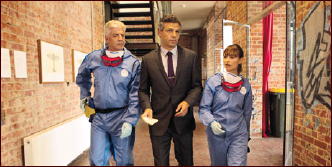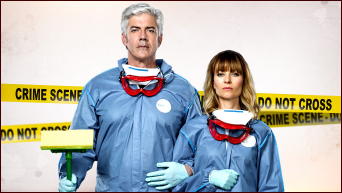Thu 6 Aug 2015
Mike Nevins on PETER CHEYNEY and GEORGES SIMENON.
Posted by Steve under Authors , Columns , Reviews[7] Comments
by Francis M. Nevins
A library of mysteries is something like Forrest Gump’s chocolate box: you never know what you’ll find. What I happened to pull off a shelf the other day was one by Peter Cheyney entitled The Killing Game (Belmont Tower #50767, paperback, 1975) and looks like one of the author’s old spy novels in its first U.S. edition.
The front cover blurb reads: “When the British Secret Service decides to recruit a guy there is no safe way he can say no.†The back cover blurb gives us more of the same: “A guy doesn’t say no when the British Secret Service decides he‘s the right man for some job. First, they ask him nice, then if he still resists they put on the pressure. If he still refuses to play cricket, the sinister sophisticates in the Saville (sic) Row suits may even frame him into jail in order to make him bite the bullet. After that he’s in over his head, and it’s just like the Mafia or the I.R.A. — once in, never out. They teach you all the dirty tricks and give you a license to kill. It’s a rotten, vicious business — The Killing Game.â€
Once you start skimming a few of the pages between these blurby covers, you’re likely to start giggling. Why? First off, the book isn’t a novel, it’s a collection of eight short stories. Second, no one gets forced into working for the Brits as the blurb describes. Third, and most likely to set the coffee pouring out the nose, the protagonists of the eight stories are women, and six of them even have a female first-person narrator! I think it’s safe to assume that Belmont Tower’s blurb writer was a man. And that he didn’t keep his job long.
The original British title of The Killing Game is a bit hard to figure out. The copy I own, a Four Square paperback dating from 1968, is called The Adventures of Julia. The title page indicates that it was first issued in hardcover by the short-lived Todd Publishing Group back in 1954, a few years after Cheyney’s early death, as You’d Be Surprised, which is indeed the title of one of voluptuous spy Julia Heron’s short adventures (I use the word loosely).
The invaluable Hubin bibliography doesn’t agree, listing The Adventures of Julia as the original title and giving You’d Be Surprised as the title of a Cheyney novel, published by Collins in 1940 and set in Paris. After a session of Web research I’ve concluded that Hubin is right about the novel, although he neglects to tell us that its protagonist is that rootin’ tootin’ two-gun-shootin’ G-Man (and mangler of Yank slang) Lemmy Caution.
It would seem then that You’d Be Surprised was used as a Cheyney title no less than three times: on the 1940 novel, on the Julia Heron short story and, after Cheyney’s death, on the hardcover edition of Julia’s collected exploits. What a mess!
I gather from Hubin that all eight tales in the Julia book originally appeared in pamphlet form during the years of the Blitz. They must have been intended to keep the minds of English readers occupied as they huddled in their air-raid shelters and the bombs came down on London. Mystery historian Howard Haycraft once mentioned that special “raid libraries†had been set up in Underground stations during the war for Londoners taking shelter from Hitler’s bombs but they aren’t mentioned in any accounts of the blitz that I’ve read, for example the vivid description in Volume 2 of Norman Sherry’s The Life of Graham Greene (1994). If anyone can direct me to fuller information about these libraries I’d be much obliged.
Let’s cross the Channel, shall we? People who have read more of Georges Simenon’s hundreds of novels than I have tend to divide the Maigret cycle into at least three periods. The first runs from Pietr-le-Letton (written 1929, first published in France 1931) to Maigret (written 1933, first published in France 1934; first published in the UK as Maigret Returns, 1941), while the second opens with the short stories that began to appear in French magazines in 1936 and continues through a series of novels published in France during World War II. (Simenon made a great deal of money during the Nazi occupation of France but apparently was not a “collaboâ€.)
The earliest of these novels was Les Caves du Majestic, which Simenon wrote in December 1939 but wasn’t published in the U.S. until 1978 as Maigret and the Hotel Majestic. The title seems to be a tip of the beret to Simenon’s friend and admirer André Gide (1869-1951) and his 1914 novel (which he refused to call a novel) Les Caves du Vatican.
One of the most famous scenes in that book takes place on an express train between Rome and Naples: a character named Lafcadio, who’s sharing a compartment with a stranger named Amedée, throws the poor guy out of the speeding train to his death. Lit crit types call this un acte gratuit, an act without motivation, although Gide later questioned whether there could be any such animal.
There are no actes gratuits in Simenon’s novel. The basement of the Hotel Majestic in Paris (which, according to www.trussel.com, a gem of a website if ever there was one, was modeled on Claridge’s Hotel in the same city) has more to do with Simenon’s plot than the caverns underneath the Vatican with Gide’s, but in neither work are the caves central as those beneath the Paris Opera House are in The Phantom of the Opera.
The Maigret novel opens early one morning as a breakfast chef at the Majestic discovers the strangled body of a wealthy American woman in a basement locker and soon finds himself the prime suspect. Maigret discovers — Simenon doesn’t bother to tell us how — that the woman was French by birth and had been a semi-pro hooker in Cannes before she met an American millionaire and tricked him into marriage. In time the plot morphs from sexual to financial intrigue, and at the climax Maigret uncharacteristically punches the murderer in the nose.
Here and elsewhere in middle-period Maigret, Simenon seems to stress plot more than earlier or later, although Ellery Queen-style fair play is still not his cup of café au lait. Writing at white heat as he did, Simenon slips here and there; for example, a police report in Chapter One gives the age of the dead woman’s maid as 42, but when Maigret gets to meet her much later in the book she’s described as an old lady.
What makes Les Caves rough going in spots for American readers is that either the translator or the publisher was very careless with punctuation, sometimes forgetting to insert a new set of quote marks to indicate a new speaker, at other times inserting new marks although the speaker hasn’t changed.
And one tends to get heartily sick of hearing Maigret ask “What’s he (or she) saying?†whenever a character speaks English and of hearing American characters ask the same question whenever Maigret or someone else speaks French.
Still and all, I liked this book. After reading tons of Simenon’s in which Maigret simply absorbs people and atmospheres and at the appropriate moment tells us who did what, it’s a pleasure to find one in which he acts a bit more like a detective.
